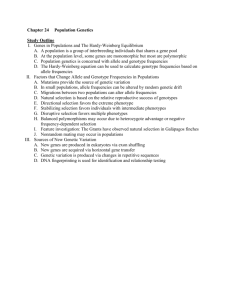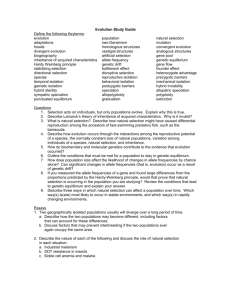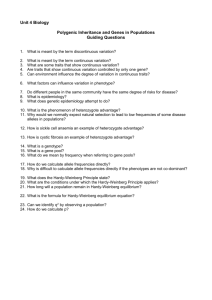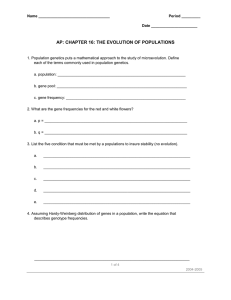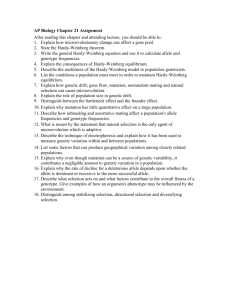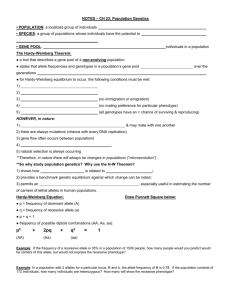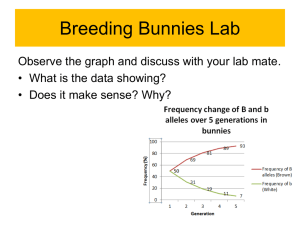Hardy-Weinberg Equilibrium Conditions
advertisement
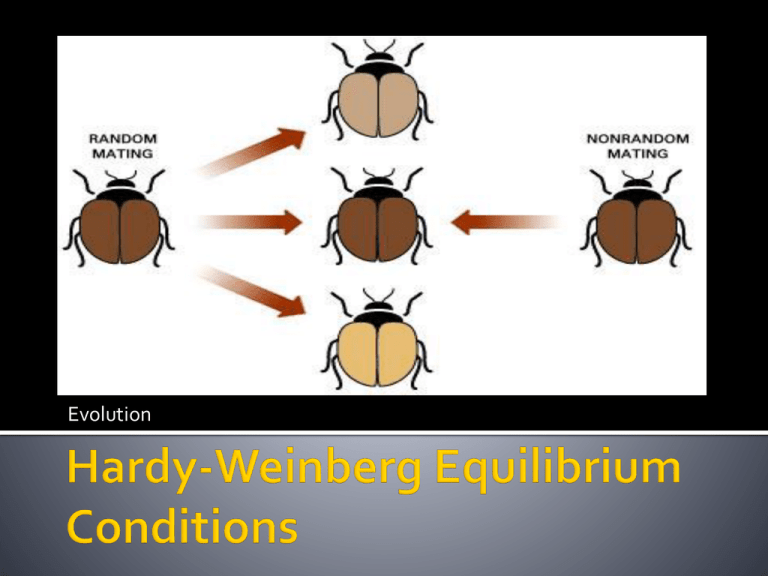
Evolution Hardy-Weinberg equilibrium provides a framework for understanding how populations evolve. Hardy-Weinberg equilibrium describes populations that are not evolving Genotype frequencies stay the same if five conditions are met. very large population: no genetic drift no emigration or immigration: no gene flow no mutations: no new alleles added to gene pool random mating: no sexual selection no natural selection: all traits aid equally in survival Real populations rarely meet all five conditions. Real population data is comared to a model. Models are used to studying how populations evolve. The Hardy-Weinberg equation is used to predict genotype frequencies in a population Predicted genotype frequencies are compared with actual frequencies used for traits in simple dominant-recessive systems must know frequency of recessive homozygotes p2 + 2pq + q2 = 1 "The Hardy-Weinberg equation is based on Mendelian genetics. It is derived from a simple Punnett square in which p is the frequency of the dominant allele and q is the frequency of the recessive allele." Genetic drift changes allele frequencies due to chance alone. Gene flow moves alleles from one population to another. Mutations produce the genetic variation needed for evolution. Sexual selection selects for traits that improve mating success. Natural selection selects for traits advantageous for survival. New species can arise when populations are isolated Populations become isolated when there is no gene flow. Isolated populations adapt to their own environments. Genetic differences can add up over generations. members of different populations cannot mate successfully final step to becoming separate species Behavioral barriers can cause isolation. called behavioral isolation includes differences in courtship or mating behaviors Geographic barriers can cause isolation called geographic isolation physical barriers divide population Temporal barriers can cause isolation called temporal isolation timing of reproductive periods prevents mating


